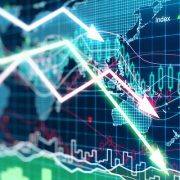
“Mexico’s lucky escape from Hurricane Harvey could still mean higher fuel costs and shortages ahead for the no. 1 of U.S. gasoline.”
“While the storm passed relatively harmlessly over Mexico’s Yucatan Peninsula, it strengthened to a Category 4 hurricane before making landfall in Texas near the U.S. Gulf Coast’s refinery hub that helps feed Mexico’s transportation system.”
“Last month, imports generated 72 percent of Pemex’s gasoline sales at a time when its six refineries operated at the lowest volume since December 1990. The outlook isn’t much better ahead, with output from two of the state-owned company’s refineries either severely curtailed or shut down. Meanwhile, Harvey may dump as much as 35 inches of rain on areas of Texas over the next week, according to the National Hurricane Center.”
“If damage in the U.S. “is as extensive as it could be, then we are looking at a pretty serious crunch on Mexico’s fuel supply,” said Javier Alonso, an analyst at Americas Market Intelligence, by telephone. “Expect fuel prices to go up regardless of where they get their supply from.””
“Mexico was the largest buyer of U.S. refined products in May at 879,000 barrels a day, some 17 percent of total U.S. exports, according to the U.S. Energy Information Agency.”
“Harvey slowed to a Category 3 hurricane as it hit the northeastern shore of Copano Bay in Texas, the National Hurricane Center said in an advisory posted about 1 a.m. local time Saturday. It made landfall as a Category 4 storm, the strongest to hit the U.S. since Hurricane Charley in 2004.”
Halting Operations
 “The storm is striking a region that has a cluster of refineries that process 5 million barrels of oil a day. By Friday, about 1 million barrels a day of crude and condensate refining capacity in Texas had been shut down by companies including Valero Energy Corp., according to company statements, government releases and people familiar with the situation. About 22 percent of Gulf of Mexico oil production had also been shuttered, along with the port of Corpus Christi, which ships the largest amount of U.S. crude overseas.”
“The storm is striking a region that has a cluster of refineries that process 5 million barrels of oil a day. By Friday, about 1 million barrels a day of crude and condensate refining capacity in Texas had been shut down by companies including Valero Energy Corp., according to company statements, government releases and people familiar with the situation. About 22 percent of Gulf of Mexico oil production had also been shuttered, along with the port of Corpus Christi, which ships the largest amount of U.S. crude overseas.”
“The Petroleos Mexicanos refinery in Salina Cruz, Oaxaca, the state-owned company’s largest, is undergoing major maintenance following a deadly fire in mid-June that has seen output reduced to a third of its 330,000 barrel-a-day capacity. The 190,000-barrel-a-day refinery in Madero, Tamaulipas, is also scheduled to shut this week for intensive maintenance and will not return to normal operations until the end of December.”
“The next step would be for Pemex to “turn to their suppliers in the Caribbean, U.S. West Coast and Europe, and I would imagine any suppliers in the U.S. Midwest and East Coast,” Alonso said.”
“Pemex guaranteed its fuel supplies in advance of Hurricane Harvey and will not buy additional shipments, said a company spokeswoman who asked not to be identified, citing internal policy. It purchased cargoes that are currently on the way, said the person, without providing the origin or volume of the shipments.”
“Rates for fuel tankers from Europe to the U.S. have surged the most this year as refiners in the Gulf Coast, which accounts for half of the U.S.’s refining capacity, halt operations because of Harvey. Heavy rainfall could result in more than two million barrels of lost production in Texas, Citigroup Inc. said in a research note on Thursday.
— With assistance by Laura Blewitt”
Scroll to top
 “The storm is striking a region that has a cluster of refineries that process 5 million barrels of oil a day. By Friday, about 1 million barrels a day of crude and condensate refining capacity in Texas had been shut down by companies including Valero Energy Corp., according to company statements, government releases and people familiar with the situation. About 22 percent of Gulf of Mexico oil production had also been shuttered, along with the port of Corpus Christi, which ships the largest amount of U.S. crude overseas.”
“The storm is striking a region that has a cluster of refineries that process 5 million barrels of oil a day. By Friday, about 1 million barrels a day of crude and condensate refining capacity in Texas had been shut down by companies including Valero Energy Corp., according to company statements, government releases and people familiar with the situation. About 22 percent of Gulf of Mexico oil production had also been shuttered, along with the port of Corpus Christi, which ships the largest amount of U.S. crude overseas.”
